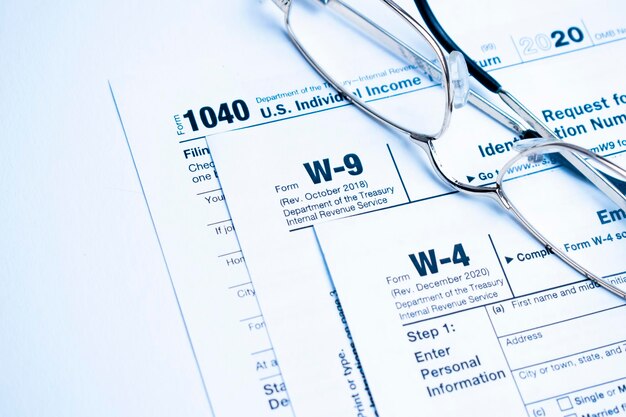Understanding Form 5498: A Comprehensive Guide for Coverdell ESA Beneficiaries
Navigating the complexities of tax forms can often feel like a daunting task, especially when it comes to understanding specifics about savings plans like the Coverdell Education Savings Account (ESA). Among the forms you might encounter is IRS Form 5498. While not as frequently discussed as other tax documents, understanding Form 5498 is crucial for parents or guardians managing an ESA. In this guide, we’ll delve into what Form 5498 is, its significance for Coverdell ESA owners, and how it impacts your tax reporting.
What Is Form 5498 and Why Is It Important?
Form 5498, titled "IRA Contribution Information," is an informational return used by financial institutions to report various types of contributions made to Individual Retirement Accounts (IRAs) and other types of accounts such as the Coverdell ESA. The form includes details about contributions, rollovers, and other relevant information for the tax year.
Significance of Form 5498
- Verification of Contributions: This form helps verify the contributions made to your Coverdell ESA, which is crucial for tax purposes.
- Documentation for Rollovers and Transfers: It documents rollovers and transfers, ensuring that they're recorded properly.
- Assesses Compliance: By reporting these contributions, the IRS ensures that account holders adhere to annual contribution limits and other regulations.
Unpacking the Sections of Form 5498
The format of Form 5498 comprises several boxes, each capturing specific data relevant to your account. Here's a breakdown:
Key Parts of Form 5498
- Box 1: IRA Contributions - Although not directly applicable to Coverdell ESAs, this box captures regular IRA contributions.
- Box 2: Rollover Contributions - Important for tracking any rollover funds entering the Coverdell ESA.
- Box 4: Fair Market Value - This part of the form provides information on the fair market value of the ESA as of December 31st of the tax year.
- Box 10: Roth IRA Contributions - While this references a Roth IRA specifically, Coverdell contributions for educational purposes might parallel some concepts concerning contribution regulations.
How Form 5498 Relates to Coverdell ESAs
Coverdell ESAs are designed to help parents save for a child’s educational expenses. While contributions themselves are not tax-deductible, earnings enjoy tax-free growth potential—and withdrawals used for qualified education expenses are also tax-free.
Key Attributes of Coverdell ESA
- Contribution Limits: Annually, an individual can contribute up to $2,000 to a Coverdell ESA.
- Qualified Expenses: These include tuition, fees, and other related costs for primary, secondary, or higher education.
- Age Restrictions: Contributions cannot be made after the beneficiary turns 18, and the funds must be used by age 30, unless exceptions apply for special needs beneficiaries.
How to Use Form 5498 During Tax Season
While forms like the 1099 include earned income details, Form 5498 plays a more supportive role, primarily as a record-keeping tool. Here’s how to leverage this form:
Practical Steps for Tax Filing
- Cross-Check with Personal Records: Ensure the contributions listed are correct, aligning with your own records.
- Consult a Tax Professional: When in doubt, particularly with complex scenarios like rollovers or conversions, seek expert advice.
- Document Retention: Keep Form 5498 with your tax records for reference, even if no immediate tax action is required.
Common Questions About Form 5498 and Coverdell ESAs
Let's explore some frequently asked questions:
Does Form 5498 Need to Be Filed with My Taxes?
No, Form 5498 is not filed with your tax return. It is for informational purposes only, aiding you in verifying the contributions and verified data.
What Avoidances Are Best When Managing a Coverdell ESA?
- Over-Contributing: Ensure contributions do not exceed annual limits to avoid penalties.
- Non-Qualified Withdrawals: Be cautious of withdrawals for expenses that don’t qualify as educational.
Practical Insights for Form 5498 and Coverdell ESA Holders
To maximize the benefits and avoid pitfalls, consider these tips:
- 📅 Timely Contributions: Make contributions early in the year to maximize the account’s growth potential.
- 🎓 Align with Educational Needs: Always align withdrawals with qualified education expenses to leverage tax advantages.
- 🔍 Regular Reviews: Annually review your Form 5498 for discrepancies, especially concerning rollovers or large contributions.
Frequently Overlooked Elements
While the form seems straightforward, some sections might be overlooked:
- Fair Market Value Assessment: While not directly affecting contributions or withdrawals, knowing the account’s fair market value can aid in financial planning.
- Timely Receipt of Form: Ensure you receive your Form 5498 by May 31st, which is when institutions must send it out for the previous tax year.
Conclusion: Bridging the Knowledge Gap
Understanding IRS Form 5498 in the context of a Coverdell ESA can empower you to maximize the potential of educational savings effectively. Although it serves a primarily informational role, staying informed about the content and implications of Form 5498 guarantees compliance, eases potential reporting discrepancies, and supports your broader educational savings strategy. Embrace its utility—together with knowledge about your Coverdell ESA—to foster sound financial planning for educational expenses.
By maintaining consistent, thorough records and seeking expert advice when needed, you can ensure that your Coverdell ESA usage aligns with both your financial goals and IRS requirements, empowering you to provide the best educational opportunities for your beneficiary.

Related Topics
- Are Coverdell Contributions Tax Deductible
- What Are Education Savings Accounts
- What Is a 5498 Irs Form
- What Is a Coverdell
- What Is a Coverdell Account
- What Is a Coverdell Education Savings Account
- What Is a Coverdell Esa
- What Is a Coverdell Esa Account
- What Is a Coverdell Ira
- What Is a Coverdell Savings Account